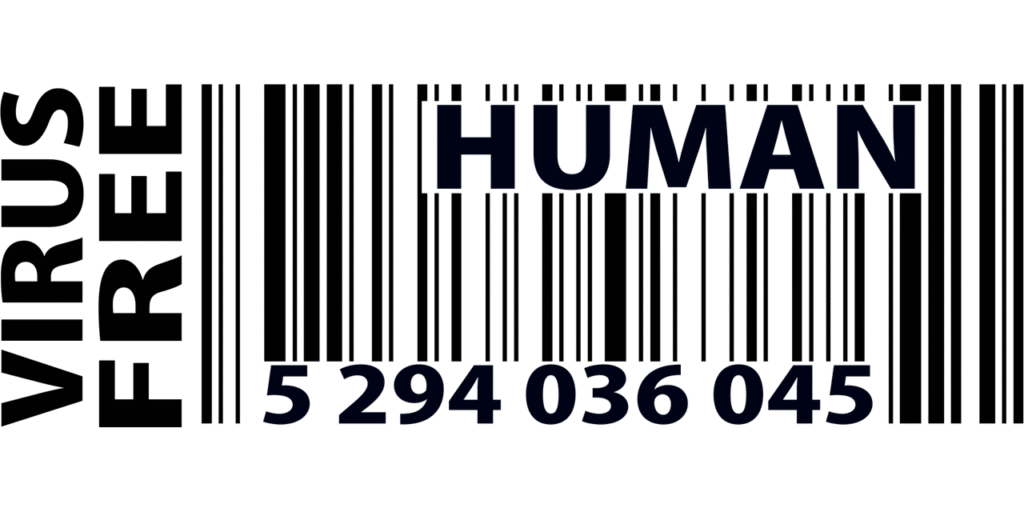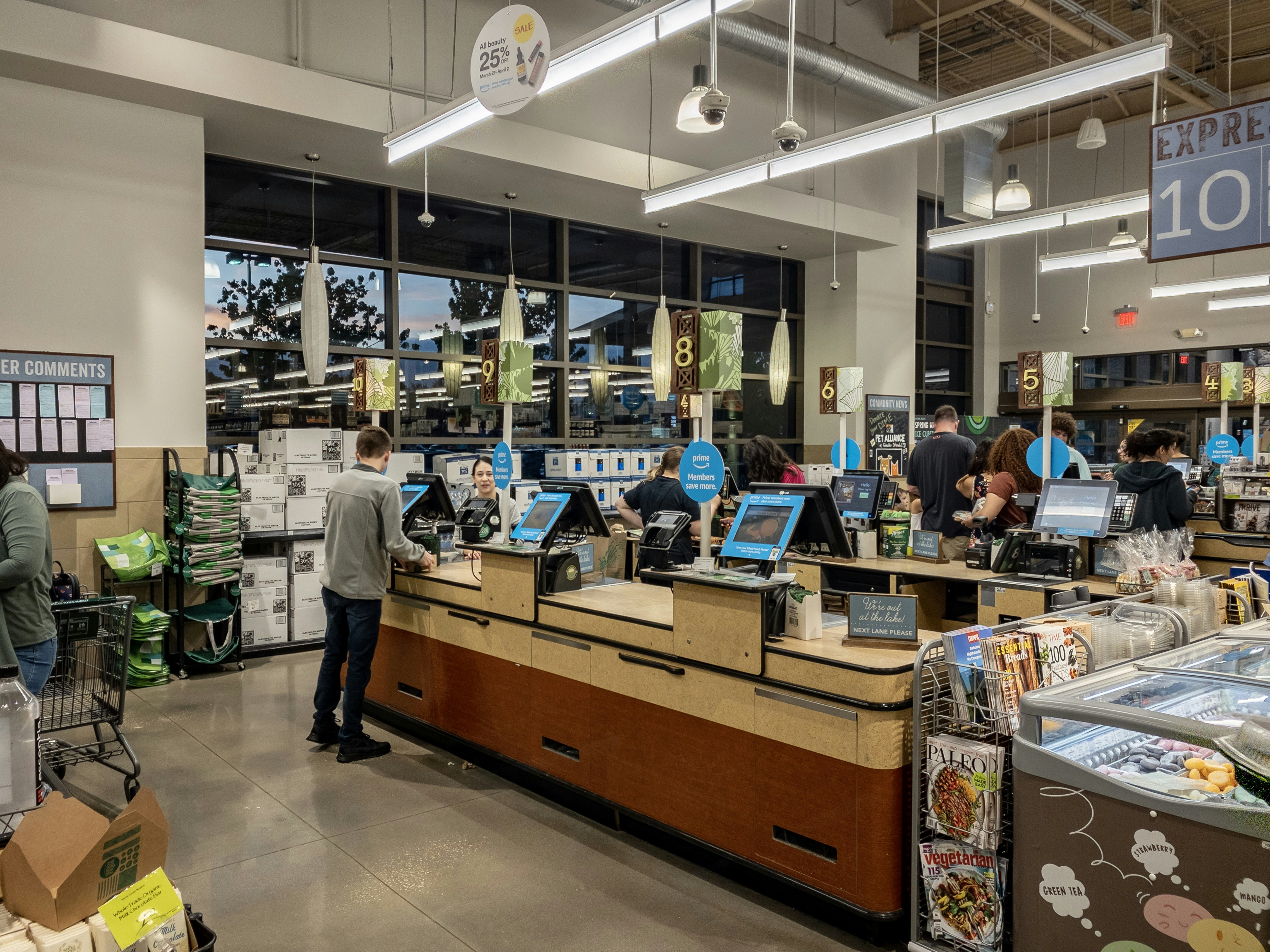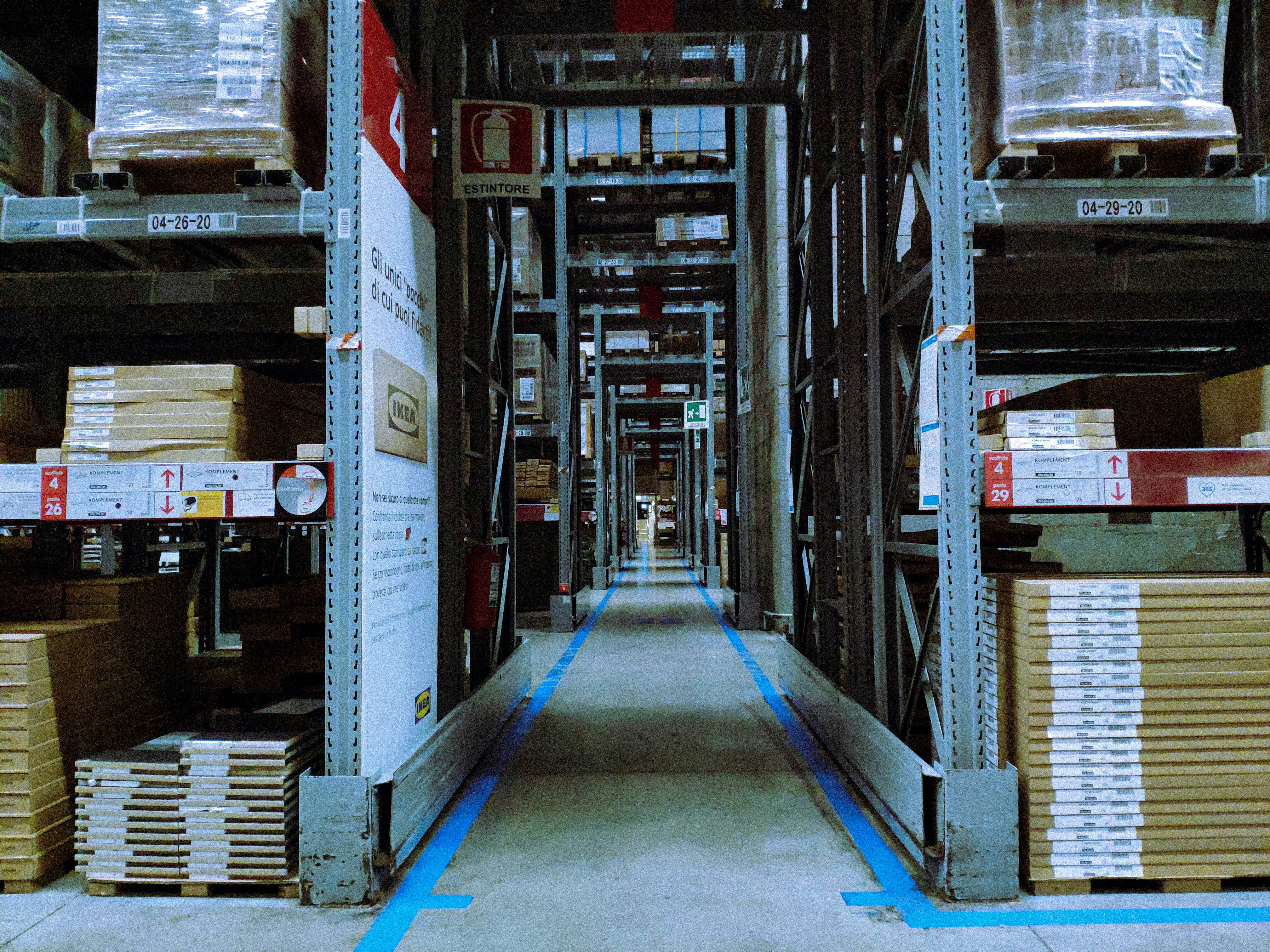Introduction to Barcode Software
Barcode software is a critical innovation that has transformed the way businesses manage inventory, streamline operations, and enhance data accuracy. By enabling the automatic identification and tracking of products through unique barcode symbols, this technology has become indispensable across various sectors, including retail, logistics, and manufacturing. The evolution of barcode technology began in the early 1950s and has since progressed dramatically, moving from simple black-and-white barcodes to today’s advanced 2D barcodes, QR codes, and mobile scanning methods.
The importance of barcode software cannot be overstated. In a retail environment, for instance, barcode systems simplify the sales process and facilitate efficient inventory management. This technology allows for quicker checkouts and minimizes human error, thereby improving customer satisfaction. Moreover, industries such as logistics and warehousing benefit significantly from barcode software through optimized tracking of shipments, reducing losses, and enhancing workflow efficiency.
As businesses have embraced digital transformation, barcode software has evolved to integrate with various automated systems, including cloud-based solutions, reporting tools, and inventory management platforms. This integration improves the accessibility of real-time data, enabling smarter decision-making and operational insights. The advancement in mobile technology has also led to the introduction of mobile apps that streamline barcode scanning processes, allowing staff to update inventory on-the-go.
In summary, the evolution of barcode software has significantly impacted multiple industries by improving operational efficiencies and reducing costs. Its importance continues to grow as businesses seek to implement smarter inventory management practices. As we delve further into this guide, we will explore the best barcode software options available in 2025, highlighting their features and benefits for businesses looking to adopt or upgrade their barcode solutions.
Key Features to Look for in Barcode Software
Selecting the right barcode software is crucial for maximizing operational efficiency and ensuring accurate tracking of products. When evaluating options, users should focus on several key features that enhance usability and functionality.
First and foremost, ease of use is vital. The barcode software should present a user-friendly interface that allows users to navigate through its features without extensive training. Intuitive design facilitates quicker implementation and reduces the learning curve for staff members. A well-structured user guide or tutorial can significantly enhance the onboarding experience.
Compatibility with existing hardware is another essential factor. Barcode systems often rely on various devices such as scanners, printers, and mobile devices. Therefore, the software must seamlessly integrate with these tools, ensuring smooth operation and minimizing disruptions. Users should verify that the software supports a wide range of barcode formats to accommodate diverse tracking needs.
Mobile access has become increasingly important in today’s fast-paced environment. Comprehensive barcode software should offer mobile capabilities, allowing users to scan, manage, and track inventory directly from their smart devices. This feature is particularly beneficial for organizations with field personnel or those that work in warehouses, enabling real-time updates and enhanced productivity.
Customization options are also critical when selecting barcode software. The ability to tailor features according to specific business needs can improve efficiency. Users should look for software that allows the creation of custom labels and workflows, ensuring that the system aligns perfectly with their operational processes.
Finally, robust reporting capabilities are essential for monitoring performance and making data-informed decisions. The software should provide insightful analytics, helping businesses track inventory levels, sales trends, and operational efficiency. Additionally, responsive customer support is vital, as users may require assistance when navigating the features or troubleshooting issues.
Top Barcode Software Solutions in 2025
The evolution of barcode software has dramatically transformed how businesses manage inventory, track products, and streamline operations. As we delve into the top barcode software solutions of 2025, it’s imperative to assess their features, pricing structures, user experiences, and the unique requirements they fulfill for different types of businesses.
One of the leading solutions is **Barcode Generator Pro**, known for its user-friendly interface and customizable options. This software allows users to generate a wide variety of barcode types, including QR codes, without requiring advanced technical skills. Pricing is competitive, starting from a monthly plan that suits small to medium-sized enterprises. The software also integrates smoothly with various inventory management systems, enhancing its utility.
**BarTender by Seagull Scientific** is another notable mention, particularly favored by larger organizations. This solution provides robust features such as automated label printing, design capabilities, and support for multiple barcode formats. Although it comes at a higher price point, its extensive capabilities justify the investment for companies dealing with high-volume production or complex supply chains.
For businesses looking for budget-friendly solutions, **Zint Barcode Generator** offers a free, open-source alternative that can be effective for smaller operations. While it might lack some advanced features, it provides essential functionalities for barcode generation and is suitable for businesses that require basic tracking without significant expenditure.
Lastly, **Wasp Barcode Software** has gained traction for its comprehensive inventory management capabilities. Alongside barcode generation, it features stock tracking, reporting tools, and easy integration with e-commerce platforms. This makes it suitable for retailers seeking to streamline their operations and improve productivity.
Overall, businesses must evaluate these software solutions based on their specific needs, budget constraints, and desired features. By considering all factors, organizations can effectively choose the right barcode software to enhance efficiency and productivity in 2025.
Pricing Models of Barcode Software
In 2025, the landscape of barcode software pricing models has evolved significantly, offering businesses varied options to suit their needs. The three primary pricing structures currently available include subscription-based, one-time purchase, and free versions. Each model comes with its distinct advantages and drawbacks, which businesses should carefully consider to determine the most cost-effective solution.
Subscription-based models have gained immense popularity due to their flexibility. Typically offered on a monthly or annual basis, these options allow users to access the latest features and updates without the need for significant upfront investment. This model is particularly advantageous for small to medium-sized enterprises that may not have the budget for hefty initial costs. However, as businesses grow, subscription fees can accumulate over time, leading to potentially higher long-term expenses.
On the other hand, one-time purchase options offer a single-cost solution for companies that prefer to own their software outright. This model usually requires a larger up-front investment but can be more economical in the long run for businesses that require stable barcode systems over extended periods. The downside is that users may miss out on future updates or enhancements unless they pay for additional upgrades. Additionally, one-time purchases may lack customer support or require a separate service agreement to address any issues that arise post-purchase.
Lastly, free versions of barcode software are often an appealing choice for startups or businesses with minimal requirements. While these solutions can offer basic functionalities at no cost, they frequently come with limitations in terms of features, customer support, and overall performance. Businesses must evaluate their needs carefully, as the trade-offs associated with free models can affect productivity in the long run.
Integrating Barcode Software with Existing Systems
Integrating barcode software into existing business processes is crucial for maximizing efficiency and productivity. Many organizations already utilize inventory management systems, ERP (Enterprise Resource Planning) software, and various other tools to streamline operations. Incorporating a new barcode solution should involve careful consideration of compatibility with these pre-existing systems to avoid potential disruptions and enhance overall functionality.
One of the first steps in evaluating compatibility is to assess the current systems in place. This process involves understanding the architecture and functionalities of the existing software, as well as identifying any gaps that the barcode software could fill. Ensuring that the barcode solution can generate and process scans effectively within these systems is essential. Moreover, it is important to consider the standard data formats used by the current systems to ensure seamless data transfer and mitigate issues related to data integrity.
An essential tip for businesses is to conduct thorough research on different barcode software options that promise integration capabilities. Many barcode solutions offer features specifically designed to work harmoniously with popular inventory management systems and ERP tools. Consulting with vendors and taking advantage of trial periods can also facilitate a more informed decision-making process.
Furthermore, implementing a phased transition strategy can be beneficial when integrating new barcode software. This involves gradually introducing the barcode solution to various departments while training staff adequately. This phased approach allows for troubleshooting and adjustments without disrupting business operations significantly. By following these guidelines, organizations can ensure a smooth transition to a new barcode solution while enhancing their operational efficiency through effective integration with existing systems.
Success Case Studies Using Barcode Software
The implementation of barcode software has proven to be a transformative process for numerous businesses across various industries. These real-life case studies illustrate the tangible benefits organizations have gained by adopting this technology.
One notable example comes from a medium-sized retail chain, which faced significant challenges in inventory management. Before integrating barcode software, the company struggled with stock discrepancies and inefficiencies in restocking processes, leading to lost sales and dissatisfied customers. Upon deploying a comprehensive barcode solution, the retail chain streamlined its inventory tracking and management. Each product was affixed with a unique barcode, enabling real-time monitoring of stock levels. As a result, the business reduced inventory errors by over 40% and improved restocking time by 30%. This not only enhanced customer satisfaction but also increased overall revenue.
In another case, a logistics company was grappling with extensive shipping delays due to manual order processing. The lack of an organized tracking system resulted in frequent misdeliveries. By introducing barcode software, the logistics provider automated its shipping processes significantly. Each package was scanned at various handling stages, allowing for end-to-end visibility of shipments. The outcome was an impressive 50% reduction in shipping errors and a 25% increase in on-time deliveries, leading to stronger partnerships with clients and a solid reputation in the logistics sector.
Additionally, an international pharmaceutical company adopted barcode-enabled solution for its inventory management amidst regulatory scrutiny. The integration of barcode technology allowed the firm to ensure compliance with health regulations, improving traceability in its supply chain. Consequently, the company reported a 20% increase in operational efficiency, which directly correlated with enhanced safety protocols and greater trust from healthcare providers.
These case studies collectively highlight the transformative potential of barcode software, illustrating how it can effectively address challenges and drive considerable improvements in operational efficiency, accuracy, and customer satisfaction across diverse sectors.
Future Trends in Barcode Software Technology
The landscape of barcode software technology is evolving rapidly, driven by advancements in machine learning, artificial intelligence, and mobile technology. As businesses increasingly rely on efficient inventory management and seamless transactions, barcode software is expected to incorporate these technologies to enhance functionality and user experience.
One of the most exciting trends is the integration of machine learning algorithms, which will enable barcode software to analyze vast amounts of data swiftly. This capability can enhance predictive analytics, allowing businesses to better forecast inventory needs and streamline supply chain operations. By leveraging historical data, companies can optimize their stock levels, reduce waste, and improve customer satisfaction. Furthermore, machine learning can aid in error reduction during scanning processes, leading to more accurate data collection and processing.
Artificial intelligence is poised to transform barcode software as well, particularly in automation. AI-driven barcode solutions can facilitate real-time data processing and decision-making, effectively reducing manual input and minimizing human error. For instance, AI can identify patterns in scanning data, provide intelligent recommendations for inventory management, and automate routine tasks. As these capabilities develop, companies will find themselves able to focus on strategic initiatives rather than day-to-day operational challenges.
Additionally, the proliferation of mobile technology is reshaping how barcode software is utilized across industries. With the increasing sophistication of mobile devices, barcode scanning applications can now provide enhanced features such as live inventory tracking, order management, and integration with e-commerce platforms. This trend not only enhances user accessibility but also allows businesses to operate more flexibly and respond rapidly to changes in market demands.
As we look to the future, these technological advancements will undoubtedly influence the development of barcode software. Businesses that embrace these innovations will be well-positioned to thrive in an increasingly competitive marketplace.
Common Mistakes to Avoid When Choosing Barcode Software
Selecting the appropriate barcode software for a business is crucial, yet many organizations fall into common traps that hinder their decision-making process. One of the primary mistakes is neglecting thorough research. Businesses often choose the first software they come across, overlooking the diverse range of options available. Each barcode software offers different features, functionality, and price points, making it essential to compare several products to find the best fit for specific needs. Taking the time to evaluate multiple systems ensures that essential requirements are met while also remaining within budget constraints.
Another prevalent error is skipping the testing phase. Many companies purchase barcode software based on its features and brand reputation without engaging in a trial run. Testing the software in the business environment is critical, as it allows for the assessment of its user-friendliness, compatibility with existing systems, and effectiveness in real-world operations. A trial also offers insight into the level of customer support available from the provider, which can be vital for troubleshooting issues that may arise post-implementation.
Furthermore, businesses often fail to consider their long-term needs when selecting barcode software. Investing in a scalable solution is imperative, especially for growing organizations. Focusing solely on current requirements may lead to the choice of a system that becomes inadequate as the company expands or evolves. Therefore, it is important to look for software that not only meets present demands but can also adapt to future changes.
Finally, overlooking integration capabilities with other systems can limit operational efficiency. Companies should prioritize barcode software that seamlessly integrates with inventory management, ERP systems, and other essential software. Avoiding these common pitfalls will empower businesses to make informed decisions, ensuring the chosen barcode software aligns with both current and future operational objectives.
Conclusion: Choosing the Right Barcode Software for Your Business
As we have explored throughout this guide, selecting the appropriate barcode software is crucial for businesses aiming to enhance their operational efficiency and inventory management. The variety of solutions available on the market caters to diverse needs, from small enterprises just starting with barcode technology to larger organizations requiring complex integrations and robust functionalities. Businesses must first assess their unique requirements, including aspects such as the scale of operations, budget constraints, and specific features necessary for their industry.
When considering barcode software, it is essential to evaluate the user-friendliness of the interface and the level of customer support offered by the vendor. A software solution that is intuitive can significantly reduce training time and improve employee adoption rates. Furthermore, integrating with existing systems should be smooth, minimizing disruptions to daily operations. For companies at the beginning stages of barcode implementation, entry-level software might be sufficient. However, as the business grows, it would be prudent to consider scalable options that can adapt to changing demands.
The ability to generate a wide range of barcode types, reporting features, and mobile compatibility are also factors that can influence your choice. Depending on the industry’s demands, companies may need software that supports advanced tracking and analytics to optimize inventory processes effectively. Ultimately, investment in quality barcode software can lead to significant advantages in productivity and accuracy over time.
In conclusion, businesses should conduct thorough research, weigh their options, and consider long-term objectives when choosing barcode software. The right decision has the potential to transform operations and facilitate growth, making it an essential component of modern business practices.
© barcodly.com- All rights reserved





